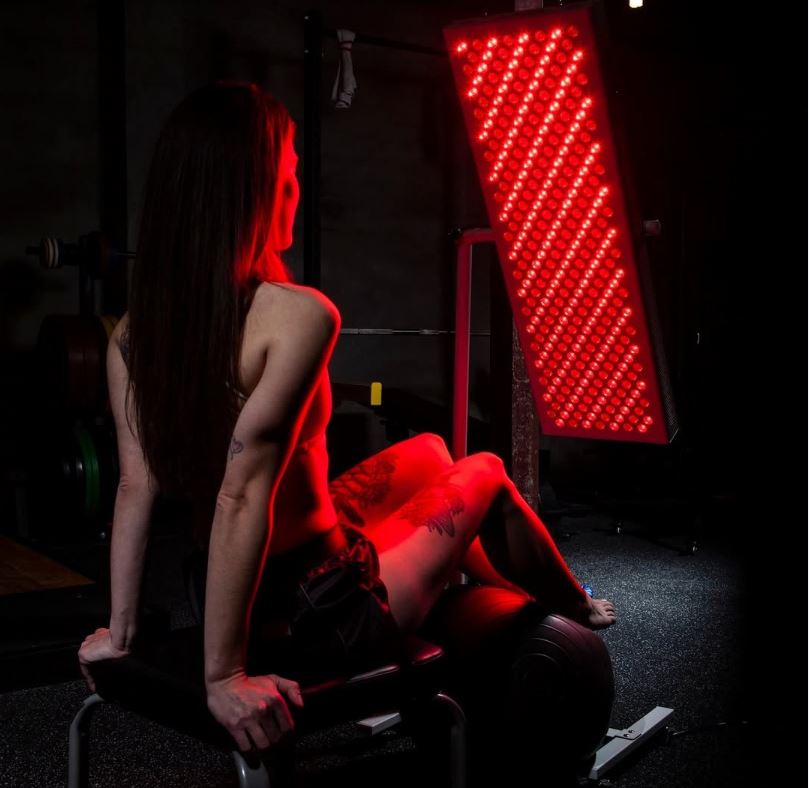![]() Free Shipping
Free Shipping ![]() Buy Now, Pay Later
Buy Now, Pay Later ![]() Eligible
Eligible
Is Red Light Therapy a Safe Option for Managing Genital Warts?

Genital warts, caused by certain strains of the human papillomavirus (HPV), are a common sexually transmitted infection (STI) that can cause discomfort, embarrassment, and even anxiety for those affected. While traditional treatments like cryotherapy, topical medications, and surgical removal are widely used, many people seek alternative therapies that are less invasive and more natural.
One such emerging treatment is red light therapy (RLT), also known as low-level laser therapy (LLLT) or photobiomodulation. But is it a safe and effective option for managing genital warts? Let’s explore the science, benefits, risks, and what experts say about this innovative approach.
Understanding Red Light Therapy
Red light therapy involves exposing the skin to low wavelengths of red or near-infrared light. Unlike UV rays, which can damage the skin, RLT penetrates the skin’s layers without causing burns or harm. It’s been used for:
- Wound healing
- Reducing inflammation
- Stimulating collagen production (for anti-aging and skin repair)
- Pain relief (in conditions like arthritis)
But how does it work for viral infections like HPV-induced genital warts?
Can Red Light Therapy Help with Genital Warts?
While research on RLT specifically for genital warts is limited, studies suggest that light therapy may have antiviral and immune-boosting effects. Here’s how it might help:
1. Immune System Stimulation
RLT has been shown to enhance cellular function, including the activity of immune cells. Since HPV persists due to immune evasion, boosting local immunity could help the body fight the virus more effectively.
2. Anti-Inflammatory Effects
Warts can become irritated and inflamed. RLT’s ability to reduce inflammation may help soothe discomfort and prevent secondary infections.
3. Enhanced Tissue Repair
If warts are removed via other methods (like freezing or excision), RLT could promote faster healing of the affected skin.
4. Potential Antiviral Properties
Some studies suggest that certain light wavelengths can disrupt viral replication. While more research is needed, this could theoretically apply to HPV.
VELLGUS Elite V2
THE #1 RATED RED LIGHT DEVICE
VELLGUS pro V2
THE #1 RATED FULL BODY RED LIGHT DEVICE
Is Red Light Therapy Safe for Genital Warts?
Safety is a major concern when treating sensitive areas like the genitals. The good news is that RLT is generally considered safe when used correctly. Unlike harsh topical acids or surgical procedures, it is non-invasive and painless.
Potential Risks & Considerations
- Overuse: Excessive exposure could cause mild irritation or redness.
- Effectiveness: RLT may not completely eliminate warts on its own and might work best alongside other treatments.
- Device Quality: Not all at-home RLT devices are FDA-cleared. Medical-grade devices used in clinics may offer better results.
What Do Experts Say?
While some dermatologists and holistic practitioners support RLT as a complementary therapy, most agree that it should not replace conventional treatments like:
- Cryotherapy (freezing warts)
- Topical treatments (e.g., imiquimod, podophyllotoxin)
- Surgical removal (for stubborn warts)
How to Use Red Light Therapy for Genital Warts
If you’re considering RLT, here’s how to approach it safely:
1. Consult a Healthcare Provider
Before trying RLT, discuss it with a doctor to ensure it won’t interfere with other treatments.
2. Choose the Right Device
- Medical-grade RLT devices (used in clinics) are more powerful.
- At-home devices should be FDA-cleared and designed for dermatological use.
3. Follow Proper Protocols
- Session length: Typically 10-20 minutes per session.
- Frequency: 3-5 times per week, depending on device guidelines.
- Distance: Keep the light at the recommended distance (usually 6-12 inches from skin).
4. Combine with Other Treatments
For best results, RLT may be used alongside:
- Immune-boosting supplements (e.g., zinc, vitamin C)
- Topical treatments (as prescribed by a doctor)
- Healthy lifestyle habits (diet, stress management)
Final Verdict: Should You Try Red Light Therapy?
Red light therapy shows promise as a supportive treatment for genital warts due to its safety profile and potential immune-boosting effects. However, it is not a standalone cure and should be used under medical guidance alongside proven therapies.
If you’re looking for a non-invasive, pain-free option to complement traditional treatments, RLT may be worth exploring. But always prioritize evidence-based methods first and consult a healthcare professional before starting any new regimen.
Have you tried red light therapy for skin or wart treatment? Share your experiences in the comments!








